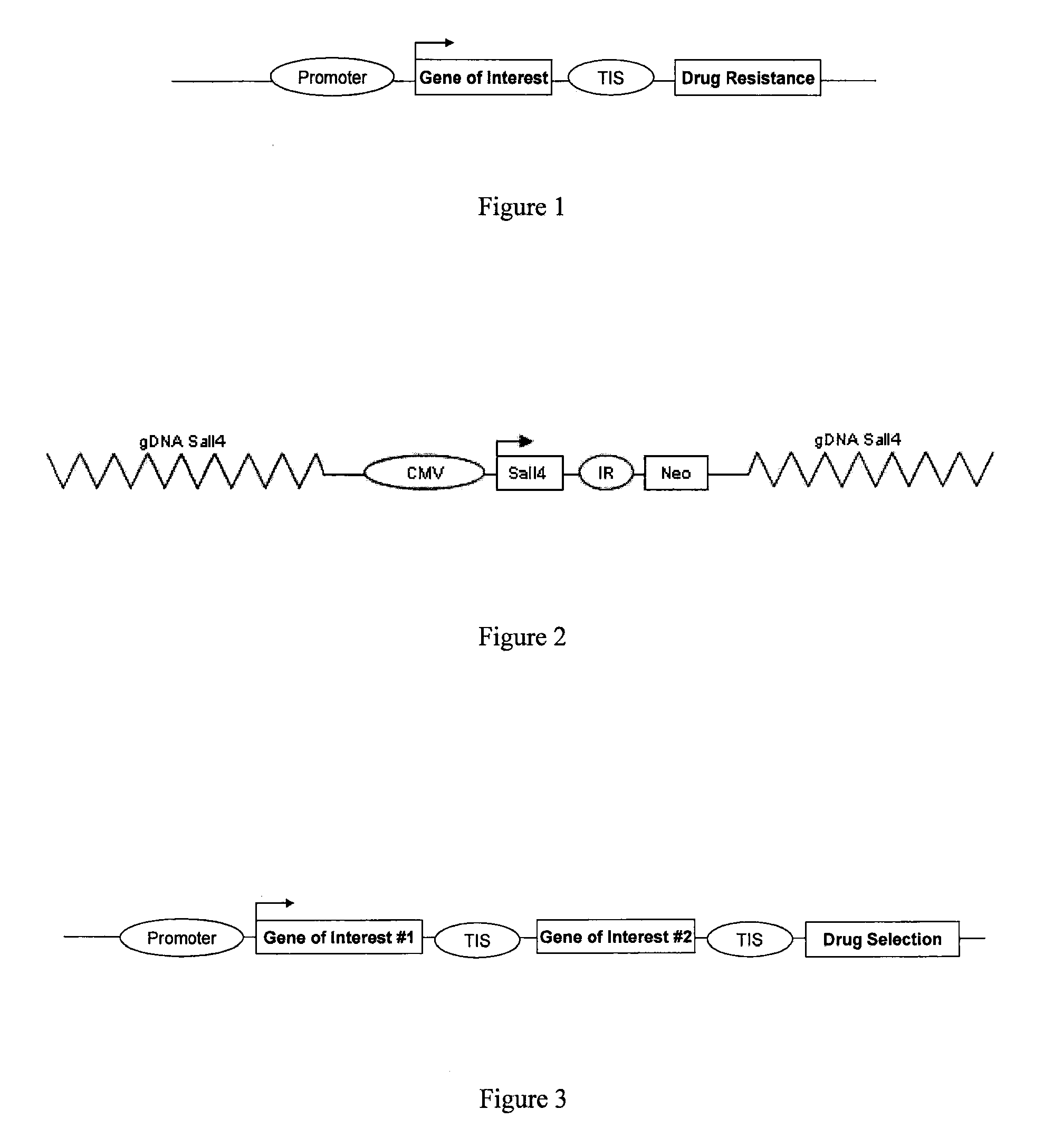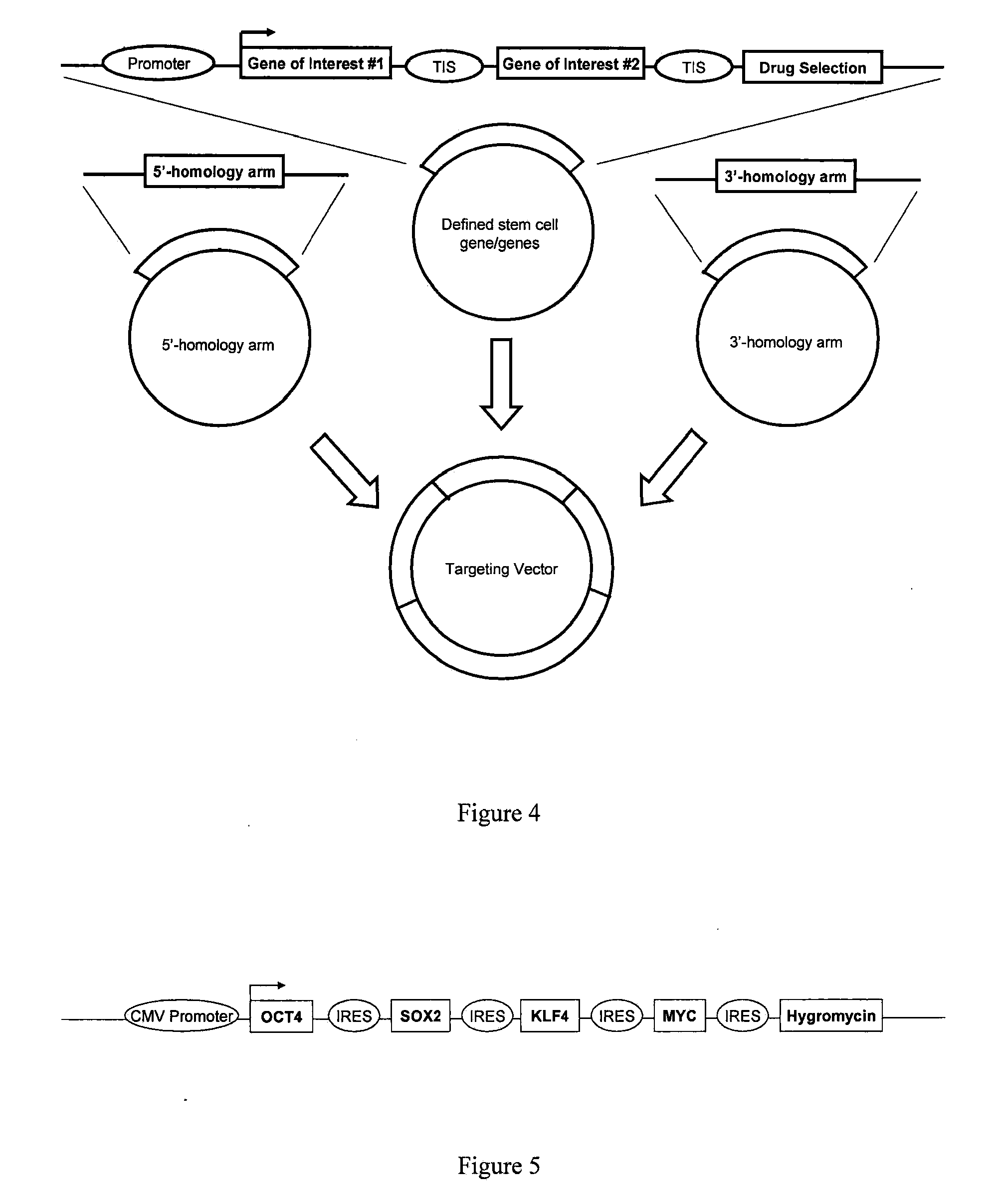Reprogramming of Differentiated Progenitor or Somatic Cells Using Homologous Recombination
- Summary
- Abstract
- Description
- Claims
- Application Information
AI Technical Summary
Benefits of technology
Problems solved by technology
Method used
Image
Examples
example 1
Generation of a Polycistronic Vector Construct Suitable for Homologous Recombination
[0063]This example illustrates the generation of a polycistronic vector construct including four genes that induce pluripotency suitable for targeted integration into a somatic cell genome via homologous recombination.
[0064]The present example illustrates the design and execution of homologous recombination based cellular retrodifferentation for therapeutic purposes. Recent research has suggested that the genes OCT4, SOX2, KLF4, and c-MYC are able to reprogram fetal fibroblast cells to confer a stem cell-like phenotype. However, as discussed herein, other genes may also be utilized to reprogram somatic and progenitor cells using a similar vector design. Classical cloning techniques were used to design and create a fragment of these four genes driven by the cytomegalovirus (CMV) promoter and separated by an internal ribosomal entry site (IRES). The partial expression cassette is shown in FIG. 4.
[0065]...
example 2
Reprogramming of Somatic Cells Using a SALL4 Expression Construct Integrated Via Homologous Recombination
[0066]The following This example illustrates the reprogramming of somatic cells by integration of a construct expressing endogenous SALL4 via homologous recombination.
[0067]Focusing intensely on the role of SALL4 in embryonic stem cells the targeting construct shown in FIG. 2 was generated. It has been previously shown that SALL4 regulates the expression of vital reprogramming factors in embryonic stem cells and thus, implicated in somatic cell reprogramming.
[0068]Following generation of the CMV-SALL4-neo targeting construct the plasmid was electroporated into mouse tail tip fibroblasts expressing SALL4-GFP promoter-reporter construct. A SALL4 expression cassette was integrated into the SALL4 locus of the genomic DNA using homologous recombination because heterozygous SALL4 mice have no obvious phenotype. After 17 days post transfection (10 days in ES media), ES-like clones expre...
PUM
| Property | Measurement | Unit |
|---|---|---|
| Digital information | aaaaa | aaaaa |
| Digital information | aaaaa | aaaaa |
| Digital information | aaaaa | aaaaa |
Abstract
Description
Claims
Application Information
 Login to View More
Login to View More - R&D
- Intellectual Property
- Life Sciences
- Materials
- Tech Scout
- Unparalleled Data Quality
- Higher Quality Content
- 60% Fewer Hallucinations
Browse by: Latest US Patents, China's latest patents, Technical Efficacy Thesaurus, Application Domain, Technology Topic, Popular Technical Reports.
© 2025 PatSnap. All rights reserved.Legal|Privacy policy|Modern Slavery Act Transparency Statement|Sitemap|About US| Contact US: help@patsnap.com


